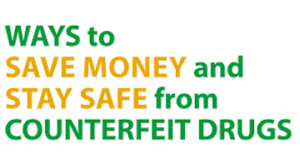“Canadian Shelves Would Run Dry” Warns Canadian Health Economist about U.S. Proposals to Raid Canadian Drug Supply
A new article on Politico Pro highlighted the inherent danger in seeing the importation of prescription drugs from Canada as the solution to lowering drug prices for U.S. patients: a Canadian expert warned that it would in all likelihood destroy their drug market. Canada’s population of 36.7 million residents does not have the volume of prescription drugs available to fulfill the needs of its citizens and the U.S.’s roughly 326 million citizens.
Steve Morgan, a Canadian health economist, said that “The Canadian shelves would run dry.” PSM Board President Dr. Marv Shepherd came to the same conclusions when he examined this issue in research papers published in 2010 and 2018. According to Dr. Shepherd’s model, if only one-fifth of U.S. prescriptions were filled in Canada, there would be no medicine left in the country in just 183 days.
While there are fears that drugmakers might pull their stock if they feel Canadian pharmacies are making it available to U.S. customers, former FDA Commissioner Mark McClellan said it is far more likely that price for prescriptions drugs will increase in Canada while remaining mostly unchanged in the U.S. As Morgan pointed out, Canada is “second only to the United States” when it comes to paying the most for prescription drug prices. Although Canada does have a government-run health system, that system does not cover things like prescription drugs, long-term care, or dental care. Health Canada struggles to make medicines affordable for its citizens, and they frequently experience drug shortages.
Most often when someone compares the price of a medication in the U.S. to Canada, they are comparing brand-name drugs, which is not the comparison that is most useful to Americans. According to the Association for Accessible Medicines, 90 percent of U.S. prescriptions filled in 2017 were filled with generics, and generic drugs are frequently less expensive in America than they are in Canada. PSM has looked at some of the most commonly prescribed drugs in the country and Americans always pay less than our Canadian counterparts. Metformin (generic Glucophage), atorvastatin (generic Lipitor), omeprazole (generic Prilosec), and all others that we examined always cost less in the United States than they did in Canada. Even when the company had pharmacies in both countries, the generic versions of the drugs cost Americans less.
If drug importation became the law of the land, that would not necessarily mean that Americans could get their medications sent to them from any pharmacy in Canada. Canadian pharmacists can only fill prescriptions submitted by a Canadian doctor. The practice of prescription co-signing, where a Canadian doctor who has not examined the patient signs off on a prescription from an American doctor, is not an accepted practice in any Canadian province.
The concept of American raiding Canada’s drug supply is most likely not an idea that Canadian lawmakers and regulators savor. The Canadian Pharmacists Association has come out against U.S. proposals to import prescription drugs in the past. The article in Politico Pro stated that patient advocacy groups and providers in Canada would also need to sign off on allowing Americans access to their drugs. Additionally, Canada has regional pharmacy boards that issue standards and guidance for the pharmacists within their provinces, and they would all need to agree as well.
Many people who purchase from so-called online Canadian pharmacies do not realize that these drugs are not the same drugs approved by Health Canada. Health Canada issued a warning about the dangers of buying their prescription drugs from online pharmacies. Regulators on both sides of the border warned that unregulated online pharmacies have the potential to be a conduit for counterfeit or substandard medications. CanadaDrugs.com is only the most recent successful prosecution by the U.S. Department of Justice brought against Canadian online pharmacies selling counterfeit drugs to American citizens and doctors.
“Let Americans lower their prescription drug costs by allowing them to buy them from Canadian pharmacies,” sounds like a simple solution, but that sound bite stops working once you examine the issue taking into account the bureaucratic and legal landscapes on both sides of the borders. The numbers do not lie. In 2015, Canada dispensed 626.7 million prescriptions to its 35 million citizens while the U.S. dispensed 4.368 billion prescriptions to its 317 million citizens. Canada’s drug supply cannot support America’s citizens.
If you want to lower your prescription drug costs, please read PSM’s Patient Bookmark to learn some important facts on the counterfeit medicine situation in the U.S. and best practices to ensure you only purchase from a licensed pharmacy selling FDA-approved medications.
